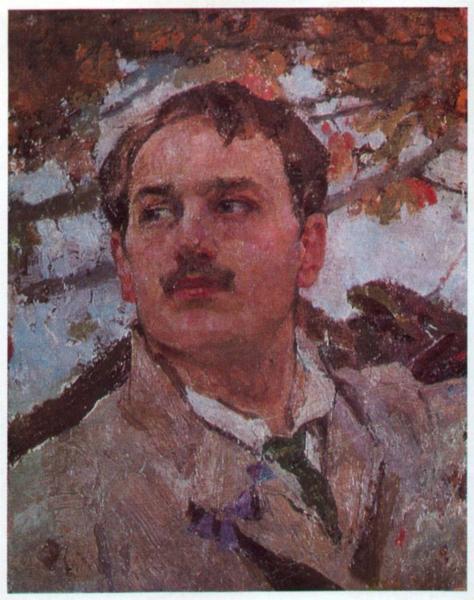Description
Fedir Krychevsky, a notable master Of the Ukrainian art, it offers us in its self -portrait of 1911 a deep exploration of its identity and the artistic currents of its time. This work, which evokes not only its image, but also a broader connection with the cultural and emotional context of the moment, stands out for its use of color, composition and expressiveness.
The painting presents the artist in the foreground, capturing him in an instant of introspection. His look, direct and penetrating, seems to invite the viewer to a silent dialogue, in which the depth of his thoughts melts with the act of contemplation of the observer. The choice of a dark background serves to highlight its figure, whose light and texture effectively contrast with the surrounding space, generating a three -dimensional effect that suggests an almost tangible presence. This technique reinforces not only the author's figure, but also the feeling of isolation or concentration that often accompanies artists in their moments of self -reflection.
The colors used in the self -portrait are intense and rich, predominantly the tones of blue and brown that enclose an almost earthly quality. The palette feels alive, vibrant, while reflecting the complex emotions that Krychevsky seeks to transmit. The artist's hair and beard are accurately outlined, which provides a sense of detail that highlights its uniqueness. When choosing warm tones for his skin, the artist not only humanizes his figure, but also suggests an emotional connection with his own being, a reflection of his spirit and experience.
Krychevsky, a representative of modernism in Ukraine, reflects in his style the influences of symbolism and fauvism, movements that prioritized the expression of emotions and the bold use of color. These influences are manifested in the way in which its face structures and in the way in which the color is used not only to represent the form, but to communicate a deeper emotional state. This work is in a tradition that covers other contemporary authors, who have also explored self -portrait as a means to self -expresses and question their place in the world.
It is important to highlight that Krychevsky was not only a remarkable painter, but also an educator and a defender of art development in Ukraine. His legacy extends beyond this painting, influencing later generations of artists in his country and abroad. The 1911 self -portrait is, in essence, a testimony of its commitment to self -exploration and the fact that art, in its purest form, is a reflection of the human being in its most intimate context. When appreciating this work, the spectator not only glimpses the artist, but also faces a mirror that invites reflection on his own existence and his relationship with the world.
In conclusion, Fedir Krychevsky's self -portrait is a piece that transcends simple representation, becoming a vehicle of introspection and emotional connection. Compositive decisions and color treatment are not only reflections of Krychevsky's personal style, but they are also indicative of a deeper search for the identity and essence of being, something that deeply resonates in the history of art and appreciation Contemporary of the work.
KUADROS ©, a famous paint on your wall.
Hand-made oil painting reproductions, with the quality of professional artists and the distinctive seal of KUADROS ©.
Art reproduction service with satisfaction guarantee. If you are not completely satisfied with the replica of your painting, we refund your money 100%.

